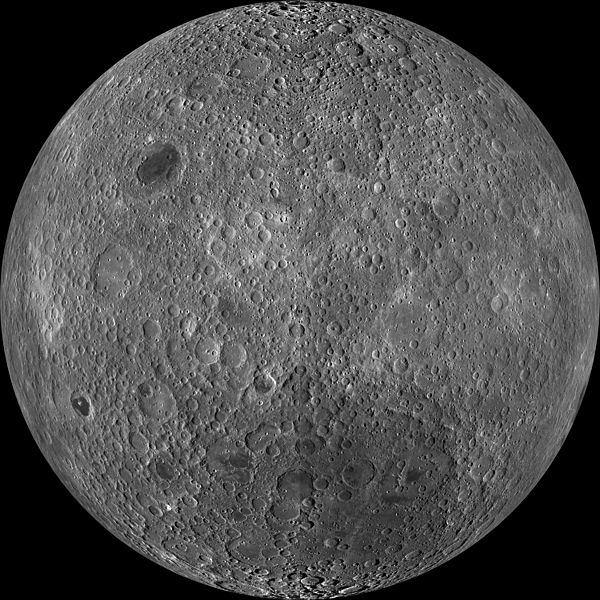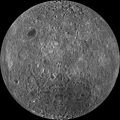Archivi:Moon Farside LRO.jpg

Grandezza de questa pagina de veduda antecipada: 600 × 600 picsel. Alter risoluzzion: 240 × 240 picsel | 480 × 480 picsel | 768 × 768 picsel | 1 024 × 1 024 picsel | 2 048 × 2 048 picsel | 18 000 × 18 000 picsel.
Fail orginal (18 000 × 18 000 picsel, dimension : 85,34 MByte, sort MIME: image/jpeg)
Cronologia de l'archivi
Schiscia in su un grup data/ora per vedè l'archivi com 'a l'è che l'era in quell moment là
| Data/Ora | Miniadura | Grandezza | Utent | Coment | |
|---|---|---|---|---|---|
| corent | 00:47, 20 Mrz 2014 |  | 18 000 × 18 000 (85,34 MByte) | Huntster | High resolution mosaic. |
| 05:12, 9 avr 2011 |  | 1 600 × 1 600 (1,44 MByte) | Bubba73 | {{Information |Description ={{en|1=Far side of the Moon, by NASA's Lunar Recon. Orbiter}} |Source =http://apod.nasa.gov/apod/image/1104/farside_lro1600.jpg |Author =NASA - LRO |Date =2011? |Permission = |other_versions = } |
Ligámm
A gh'è minga de pagine che doperen quell fail chì.
Utilizazzion global di fail
Anca questi Wiki chì a dopren quell fail chì:
- Doperad in af.wikipedia.org
- Doperad in az.wikipedia.org
- Doperad in be.wikipedia.org
- Doperad in bjn.wikipedia.org
- Doperad in bn.wikipedia.org
- Doperad in bs.wikipedia.org
- Doperad in ca.wikipedia.org
- Doperad in cs.wikipedia.org
- Doperad in de.wikipedia.org
- Doperad in en.wikipedia.org
- Doperad in en.wikibooks.org
- Doperad in en.wikiversity.org
- Solar System, technical/Moon
- User:Marshallsumter/Radiation astronomy2/Visuals
- Draft:Original research/Planets
- User:Marshallsumter/Radiation astronomy2/Visuals/Quiz
- User:Marshallsumter/Rocks/Rocky objects/Astronomy
- User:Marshallsumter/Radiation astronomy/Courses/Principles/Hourly 2
- User:Marshallsumter/Radiation astronomy/Courses/Principles/Midterm quiz
- User:Marshallsumter/Radiation astronomy/Courses/Principles/Final quiz
- Titan/Quiz
- User:Marshallsumter/Rocks/Rocky objects
- Draft:Enceladus/Quiz
- Moon/Quiz
- Stars/Sun/Heliology/Quiz
- Earth/Quiz
- Stars/Reds/Quiz
- Draft:Dione/Quiz
- User:Marshallsumter/Radiation astronomy2/Scattered disks/Quiz
- User:Marshallsumter/Radiation astronomy1/Kuiper belts/Quiz
- Liquids/Liquid objects/Moon
- User:Marshallsumter/Radiation astronomy/Craters
- Doperad in es.wikipedia.org
Varda utilizazzion global de quell fail chì.

